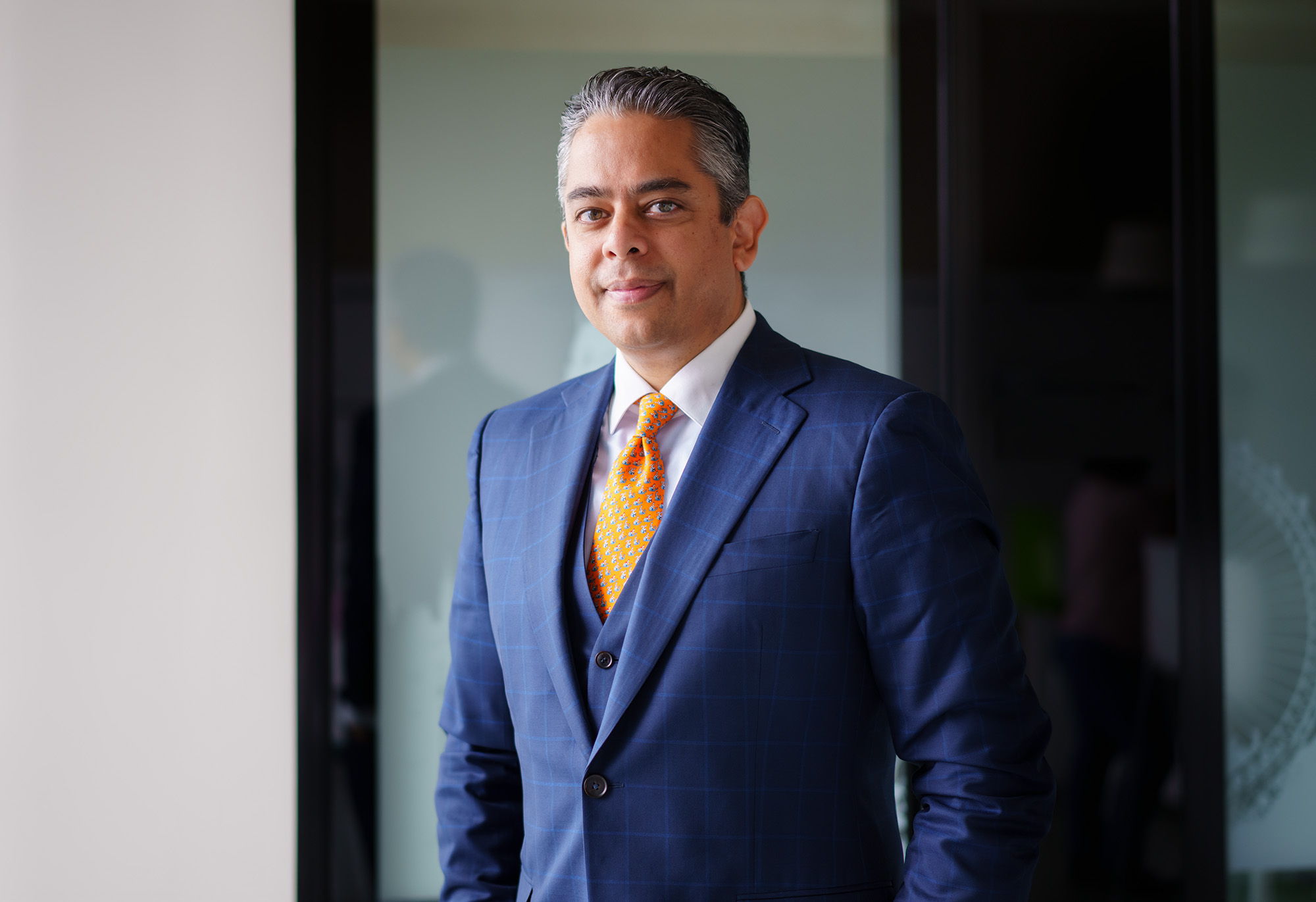Investing in Asia’s aging societies: older populations, newer opportunities
Yin & yang in the Year of the Wood Dragon
By Vikas Pershad, Portfolio Manager, Asian Equities, M&G Investments
Asia is undergoing a significant demographic transformation, characterized by a 'structural inversion' of society. The traditional population pyramid, once broad at the base with younger generations, is now becoming top-heavy and imbalanced. This introduces numerous challenges for Asian societies, but also investment opportunities
This trend is prevalent across the region, affecting not only affluent countries like Singapore, South Korea, Japan, and China but also nations like Vietnam, which might face aging-related challenges before achieving economic prosperity. Remarkably, India, known for its vast and youthful populace, now records a fertility rate that falls below the replacement threshold of 2.1. This regional shift signals a profound alteration in societal structure, with potential repercussions on economic and social fronts.
The demographic shift towards an aging population introduces numerous challenges that resonate across multiple facets of society. The workforce is shrinking, evidenced by fewer workers, farmers, and military personnel, which could lead to potential gaps in labour markets and national defence capabilities. Healthcare demands are escalating, placing increased pressure on medical systems and potentially leading to soaring costs. The contraction of the working-age population also implies reduced tax revenue, which could impact public services and governmental financial stability. Furthermore, the cumulative effect of these factors tends to slow down overall economic growth, posing challenges for maintaining the dynamism and vitality of the region's economies.
Investment opportunities
Despite the daunting challenges, the demographic transition opens doors to novel opportunities, particularly by redefining the narrative around aging. Entrepreneurs and investors in Asia are pioneering a paradigm shift, viewing aging not as an inevitable decline but as a stage ripe for innovation and rejuvenation. This optimistic outlook is inspired by both Western and Eastern cultural perspectives, balancing the somber acceptance of life's twilight as depicted by Shakespeare with Emily Dickinson's celebration of growing 'newer every day.'
This perspective is further enriched by local symbolism, such as the wood dragon, which embodies wisdom, intelligence, and the potential for growth and prosperity. This symbol serves as a powerful reminder of the inherent opportunities within this demographic shift, encouraging a proactive and positive approach to harnessing the potential of an aging population.
North Asia is at the forefront of technological and industrial innovation, responding proactively to the demographic shifts.
- The region is experiencing a burgeoning demand for robotics, driven by labour shortages in manufacturing sectors. This demand is catalysing growth in robotics manufacturing, with leading companies in Japan, China, Taiwan, and South Korea expanding their operations and technological capabilities. The investment potential is not limited to the manufacturers themselves but extends through the entire supply chain, including providers of crucial components like sensors, reduction gears, semiconductors, and software.
- Additionally, the health, wellness, and beauty sectors are witnessing substantial innovation. Japanese biotech firms are leveraging favourable government policies to pioneer treatments in regenerative medicine, potentially revolutionizing the approach to chronic ailments, cancer, inflammation, and neurodegenerative diseases. The wellness and beauty industry, too, is thriving, with companies introducing a range of products and services, from modern gyms to novel foods and makeup products, all tailored to cater to the nuanced needs of different generations.
South Asia, with India at its helm, is emerging as a vibrant hub for diverse investment opportunities tailored to an aging demographic.
- The healthcare sector is demonstrating robust growth, with private hospitals scaling up infrastructure to meet the burgeoning demand, thereby achieving healthy top-line growth and expanding profit margins.
- The education sector is equally dynamic, with companies leveraging a blend of online and offline teaching methodologies complemented by data analytics to develop re-skilling and up-skilling programs for seniors. This not only enhances productivity but also extends the professional lifespan of the aging population.
- Moreover, companies are innovatively meeting the daily needs of the elderly, from designing age-friendly homes to streamlining prescription medication delivery and providing affordable, high-quality eyewear.
- The demographic trends in Asia are also paving the way for Indian companies to tap into the African market, promising a bright future for exports ranging from motorcycles and packaged foods to beauty products.
Financial services in transformation
The financial services sector is undergoing a significant transformation, driven by the diverse needs of an aging population. There's a growing segment of affluent seniors who, despite being resource-rich, are time-poor. Conversely, there's also a segment that is constrained both resource-wise and time-wise.
Financial institutions, including banks, insurance companies, and fintech startups, are developing tailored solutions to cater to this broad spectrum. From the financialization of savings through products like mutual funds and insurance policies to innovative offerings in tourism, long-term care, and medical devices, the sector is broadening its horizons. Companies are not just focusing on augmenting financial assets but are also keen on enhancing life quality, be it through travel, healthcare, or cutting-edge technologies that aid or replace human faculties, ensuring a more comfortable and dignified life for the elderly.
Policies to counterbalance the impacts of an aging society
Addressing the multifaceted impacts of an aging Asian society extends beyond the realm of products and services. It necessitates a comprehensive approach involving better policies, increased infrastructure investment, and a transformative shift in societal attitudes towards aging.
Immigration and tax policies need to be reevaluated and aligned with the current demographic realities to ensure a balanced and sustainable societal structure. Physical infrastructure investments are crucial in creating an age-friendly environment that is accessible and accommodating. Moreover, changing the societal mindset about aging is imperative. Recognizing and harnessing the potential of an aging population can lead to a renaissance of wisdom, experience, and productivity. Under the right conditions, the embers of old age can reignite, translating into a powerful force for societal and economic rejuvenation.
This holistic approach to aging, much like the multifaceted symbolism of the wood dragon, can pave the way for a balanced and prosperous society.
